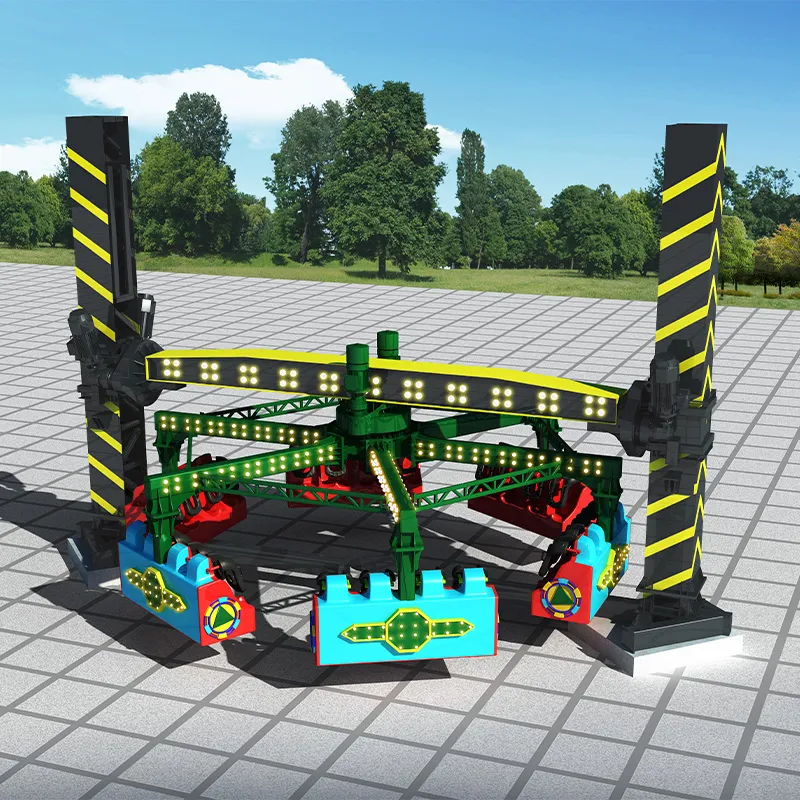- Albanian
- Arabic
- Belarusian
- Bengali
- Czech
- English
- French
- German
- Hebrew
- Hungarian
- Indonesian
- irish
- Italian
- Japanese
- kazakh
- Persian
- Russian
- Thai
- Uzbek
- Vietnamese
The Origin and Evolution of the First Roller Coaster in Amusement Parks
The First Roller Coaster A Thrilling Journey Through History
The exhilarating experience of a roller coaster ride is one that many of us have come to love over the years. The feeling of speeding down steep drops, experiencing weightlessness, and navigating through twists and turns can send anyone's adrenaline soaring. Roller coasters have become a staple of amusement parks around the world, attracting millions of thrill-seekers each year. However, few are aware of the fascinating history of these gravity-defying contraptions, particularly the story of the very first roller coaster.
The origins of the roller coaster can be traced back to the early 17th century in Russia. These early prototypes, known as Russian Mountains, were wooden slides covered in ice, where riders would sit on wooden sledges and glide down the slopes. The popularity of these icy rides spread across Europe, eventually making their way to France. By the 18th century, Parisians enjoyed a variation of this concept with a ride called the Promenades de la Montagne Russe, which featured a series of wooden track structures on which carts would glide down small hills.
However, it wasn't until the 19th century that the modern roller coaster began to take shape. The first documented roller coaster in the United States was the Gravity Road, built in 1884 at Coney Island in New York. This wooden coaster was a significant advancement over its predecessors, introducing the concept of a train-like system composed of linked cars that would ascend and descend along a carefully engineered track.
The turning point in roller coaster history came with the creation of the Switchback Railway at Coney Island in 1884. Designed by LaMarcus Adna Thompson, this ride marked the beginning of the commercial roller coaster era. The Switchback Railway was a simple layout featuring gentle twists and turns, providing a thrilling experience for its riders without extreme drops. The success of this ride set the stage for the rapid development of roller coasters in amusement parks across the country.
the first roller coaster

As the 20th century unfolded, roller coasters continued to evolve, becoming taller, faster, and more intricate. Innovations in engineering allowed for steeper drops and loop-the-loops, pushing the boundaries of what was possible in amusement rides. The introduction of steel tracks in the 1950s revolutionized the industry, enabling the construction of more complex and daring designs. Roller coasters such as the Matterhorn Bobsleds at Disneyland in 1959 and Coney Island Cyclone in 1927 exemplified this new wave of coaster design, thrilling riders with their improved speed and stability.
Today, roller coasters are a centerpiece of amusement parks worldwide. From the towering Kingda Ka at Six Flags Great Adventure, which boasts the title of the world's tallest roller coaster, to the adrenaline-pumping Steel Vengeance at Cedar Point, which holds the record for the world's tallest hybrid coaster, the possibilities seem endless. Theme parks continuously strive to innovate, incorporating cutting-edge technology and unique themes to enhance the rider's experience.
The legacy of the first roller coaster lives on, as its evolution continues to captivate riders of all ages. The thrill of a roller coaster symbolizes the joy of adventure and the spirit of enjoyment that has persisted through the ages. Whether it’s the nostalgic charm of a classic wooden coaster or the high-octane excitement of a modern steel monster, roller coasters remain a testament to human creativity, ingenuity, and the unrelenting desire for fun.
In conclusion, the journey from the icy slides of ancient Russia to the high-speed twists of today’s roller coasters is a remarkable story of innovation and excitement. The impact of the first roller coaster continues to resonate, providing an exhilarating escape from reality and a chance to experience the thrill of flight that millions are eager to embrace. As we soar through the loops and drops of our favorite rides, we can take a moment to appreciate the rich history that has laid the foundation for one of the most beloved amusement park attractions of all time.
-
Flume Ride-Hebei Zhipao Amusement Equipment Manufacturing Co., Ltd.|Thrilling Water Attraction&Customizable DesignJul.30,2025
-
Flume Ride - Hebei Zhipao Amusement Equipment | Water Coaster, Thrilling DescentJul.30,2025
-
Flume Ride - Hebei Zhipao | Thrilling Water AttractionJul.30,2025
-
Flume Ride: Thrilling Water Attraction by Hebei Zhipao|Log Flume Manufacturers&Flume Ride DesignJul.30,2025
-
Flume Ride-Hebei Zhipao Amusement Equipment Manufacturing Co., Ltd.|Thrilling Water Coaster, Safe DesignJul.30,2025
-
Flume Ride-Hebei Zhipao Amusement Equipment Manufacturing Co., Ltd.|Thrilling Water Attraction, Safe DesignJul.30,2025
